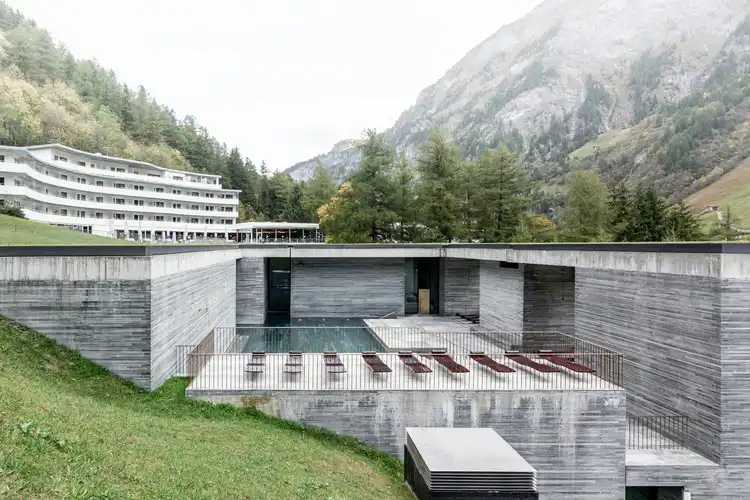
Tadao Ando’s work is characterized by poetic minimalism and an immense relationship with nature. He has significantly influenced the times of evolutionary trends in biophilic design in modern architecture, based on how he comes together with elements like light, water, and vegetation into his bold concrete structures, almost bracketing the built and the natural worlds. This approach, to perfection in such masterpieces as the Church of the Light and the Benesse Art Site, handles sustainable and regenerative architectural practices worldwide.
Tadao Ando Philosophy-Symphony of Minimalism
The vocabulary of Ando’s architecture happens to be the greatest expression of simplicity, where the concrete textures are elevated to evoke serenity. He also depicts an acute sensitivity towards nature; he does not insert buildings into the environment but lets the surroundings design it for him. He once said, “I create enclosed spaces mainly by means of thick concrete walls. The primary reason is to create a place for the individual, a zone for oneself within society.”
This ideology harmonizes very well with the principles of biophilic architecture, which attempts to bring about betterment through the infusion of organic elements into urban planning.
Light as a Sculptural Element: The Church of the Light
Perhaps his most famous work is the Church of the Light in Osaka. He certainly demonstrates that he is able to achieve the most profound spatial experiences with relatively minimal intervention. The sculptural concrete cross carved in the wall serves as a means by which the natural light floods the space and makes it meditative.

It remains inspirational for architects today to use light to instil such emotional and sensory connections with nature. Projects such as Herzog & de Meuron’s Ricola Herb Centre re-invent Ando’s light play while using the latest sustainable technologies, a testament to Ando’s lasting influence on modern design.

Water as a Narrative: The Benesse Art Site
The Benesse Art Site on Naoshima Island, by Ando, is an exemplary juxtaposition of architecture and environment. Here, water becomes an extension of the built form, creating reflective surfaces that blur, in some way, the interior and exterior boundary.

The Chichu Art Museum, one part of the complex, is located above ground but has been dominated by natural light, a true embodiment of the ability of Ando to join artificial and natural environments together. Biophilic architectural takes after this balance in many ways, as seen in structures like BIG’s Amager Resource Centre where water features are well-blended with the functional and recreational provisions.

Greens and Cement: Finding Balances
Concrete is the signature material used by Ando, but he quite often juxtaposes it with lush verdure as in the example of the Awaji Yumebutai project. The cascading gardens of this botanical amphitheatre celebrate life and demonstrate how architecture can amplify the natural beauty of its surroundings.

This philosophy has been reinterpreted in contemporary projects, including the Bamboo Houses from Vo Trong Nghia Architects. Here, greenery is no afterthought but a structural element; thus, underlining the influence of Tadao Ando‘s seamless integration of greenery and built forms on modern biophilic design.

Sustainable Design Inspired by Ando
Sustainability defines Ando beyond mere aesthetics. His designs represent sustainable design by incorporating passive principles of architectural design. For example, his buildings often utilise natural ventilation, daylighting, and site responsiveness as energy consumption measures.

Ontemporary architects such as Kengo Kuma and Sou Fujimoto developed Ando’s ethos of sustainable design. Kuma’s Asakusa Culture and Tourism Centre built with local materials, offers passive cooling measures, highlights passivity and respect for the acquisition of spatial purity and integration into the environment, reminiscent of Ando.
Regenerative Architecture: Reinterpreting Ando’s Approach
The concept of regenerative architecture, which heals the environment while building, is often epitomized in the words of Tadao Ando. Projects such as The Bosco Verticale in Milan reinterpret Ando’s balance of the lines of nature and urbanity, taking in entire ecosystems through architectural frameworks.

Even though advanced in their approach with technology, these designs find a conceptual root in visionaries like Ando, whose buildings instigate architects to see buildings as nearly living, breathing, entities.
Challenges in Continuing Ando’s Philosophy
It is evident that Ando’s influence is here, but continuing the same architectural philosophy for today is very challenging. Concrete’s cost and inefficiency often fight against today’s ideal of sustainability. Improvements in low-carbon concrete and recycled materials are making it easier for architects to implement Ando’s minimalist style responsibly.
Contemporary Architects Inspired by Tadao Ando
Here are some contemporary architects who tap into the ideology of Ando:
Peter Zumthor: Therme Vals is perhaps one of such examples where, as in Ando’s regard for light and materiality, Zumthor’s minimalism seems to replay this approach.

Shigeru Ban: One of the modern masterpieces that pay respect to Ando’s nature-integrated style is Ban’s elaborative use of natural materials, including paper and wood.
Steven Holl: His designs, such as the Nelson-Atkins Museum of Art, refer to Ando-like qualities regarding their spatial poetry and interaction with light.
Tadao Ando’s Lasting Legacy
The gifts Tadao Ando has bequeathed to human culture include architecture that goes beyond serving a purpose but becomes an experience one can be absorbed in, mostly rooted in nature. His influence on biophilic architecture underscores the increasing awareness that the built environment must foster human and ecological well-being. It is the modern architects inspired by his philosophy who are not only reimagining his principles but also expanding them to make way for the pressing demands of climate change and urbanisation.
Such has been Tadao Ando’s brand of minimalism, natural elements, and sustainability, his version has long been etched in contemporary biophilic architecture. As the rest of the world seems to reinvent his vision, what Ando believes in will continue to influence spaces that celebrate the harmony of nature and design, one day promising a less treacherous built environment.
Now Stay Ahead with PAACADEMY
Check out the workshops at PAACADEMY-these are a good way to get your hands on the latest digital design tools. The industry experts leading the sessions are here to help you keep your edge sharp and inspired in this ever-changing field.


















Leave a comment